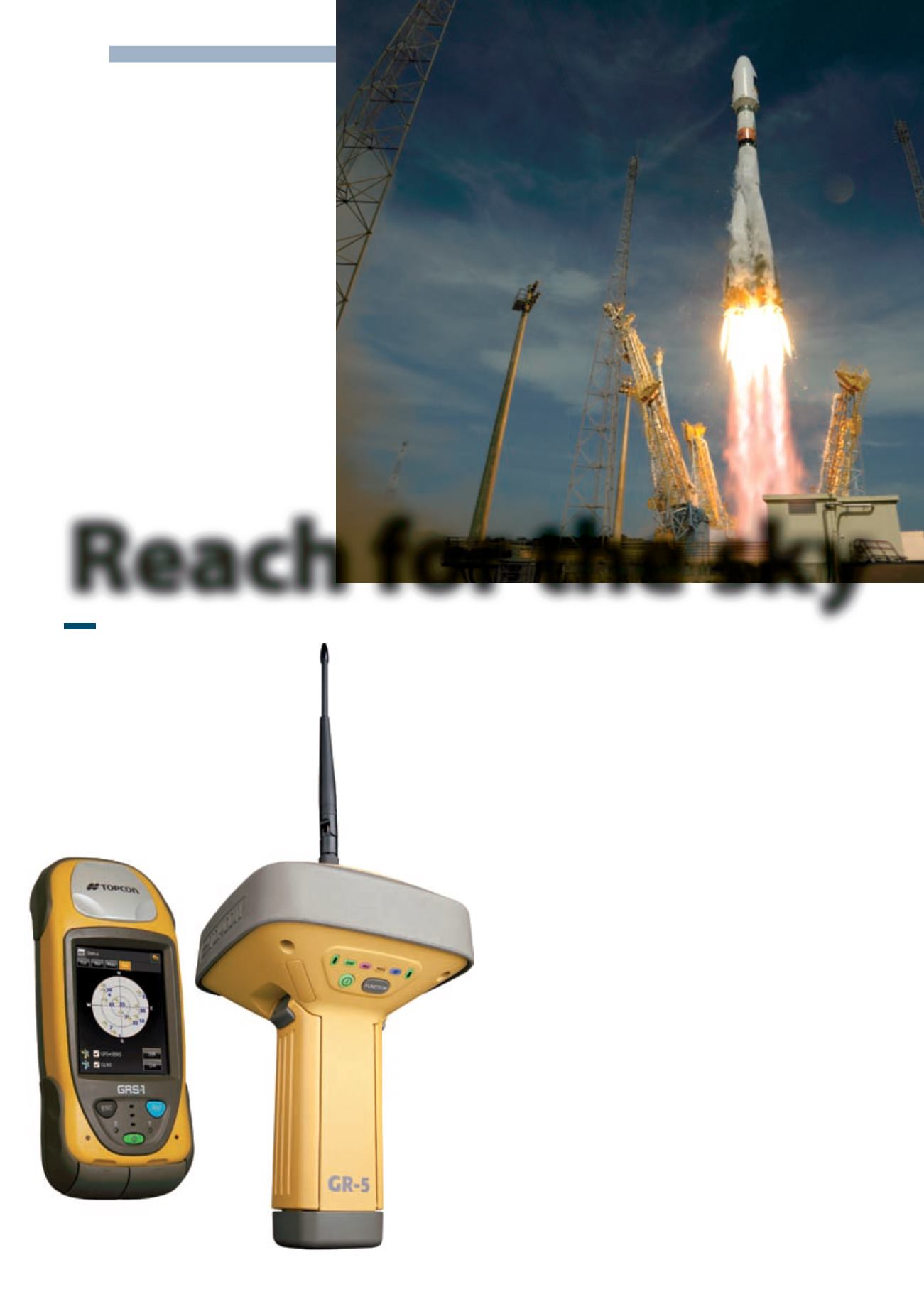
42
CONSTRUCTION EUROPE
DECEMBER 2013-JANUARY 2014
GPS
Topcon’s GR-5 is a next-
generation GNSS receiver
With more hardware
about to be
launched into orbit
around the Earth,
there are increasing
numbers of ways to
use the data.
Sandy Guthrie
finds out more
T
he sky above a construction site
is
an
increasingly
important
place as satellites have become a
completely normal part of everyday life,
for communications of all sorts and as a
positioning tool.
There is more to come, too. In November,
European Commission vice president
Antonio Tajani, commissioner for industry
and entrepreneurship, introduced Sentinel-
1A, the first satellite of the EU Copernicus
Programme that will fly in outer space.
The launch is likely to take place in April
or May of 2014 on a Soyuz rocket from
Europe’s Spaceport in French Guiana. Once
it is operational, Sentinel 1A will circle the
Earth in Low Earth Orbit at an altitude of
around 700km, and will provide continuous,
systematic, highly reliable radar imaging of
the Earth.
The newest ESA (European Space Agency)
Galileo satellite has recently emerged from
five weeks of simulated space conditions.
In late October, the phone booth-sized
satellite was placed in the 4.5m-diameter
Phenix chamber in ESA’s ESTEC Test Centre
in Noordwijk, the Netherlands – the largest
spacecraft testing facility in Europe.
Once inside, the air was pumped
out to create a space-
quality vacuum at
the same time as
the temperature
extremes
in
Galileo’s planned
orbit were also
reproduced.
Another Galileo has
also been undergoing the
same rigours at the site plus
a vibration and shock test to
reproduce its separation from its
launcher. Thermal–vacuum testing
on this second model will begin
early next year.
The sibling satellites will be
launched together on a Soyuz
rocket from Europe’s Spaceport in
French Guiana midway through
next year.
These are the first two Full Operational
Capability satellites, following on from the
first four already in orbit.
There is a commitment in Europe to the
financing of such projects. The European
Parliament has approved the financing
and governance of the Galileo and EGNOS
(European Geostationary Navigation Overlay
Service) European satellite navigation
programmes for the period 2014 to 2020.
Their total budget of €7 billion will be used
for the completion of the satellite navigation
infrastructure,
operations,
necessary
replenishment and replacement activities,
development of fundamental elements such
as Galileo-enabled chipsets or receivers and,
most importantly, the provision of services.
For the European Commission, Tajani
welcomed the budget approval. He said,
“Galileo and EGNOS are an investment in
our future. The opportunities and benefits
that these systems will bring to the European
economy and citizens are very significant.
The overall economic impact of Galileo and
EGNOS is estimated to be around €90 billion
over the next 20 years.”
GPS AND GNSS
While GPS (Global Positioning System)
is an easy way to describe the process,
GNSS (Global Navigation Satellite System)
is more encompassing. While there is GPS,
the Russians have a different system called
GLONASS, and the Chinese have BeiDou.
GNSS uses GPS, GLONASS, Galileo and
BeiDou.
There is also DGPS to consider. This
is Differential GPS and it involves the
co-operation of two receivers – one stationary
Reach for the sky
The second Galileo satellite was
launched a year ago
Vanguard technology has been
added to Topcon’s GRS-1 handheld
GNSS receiver and field controller


